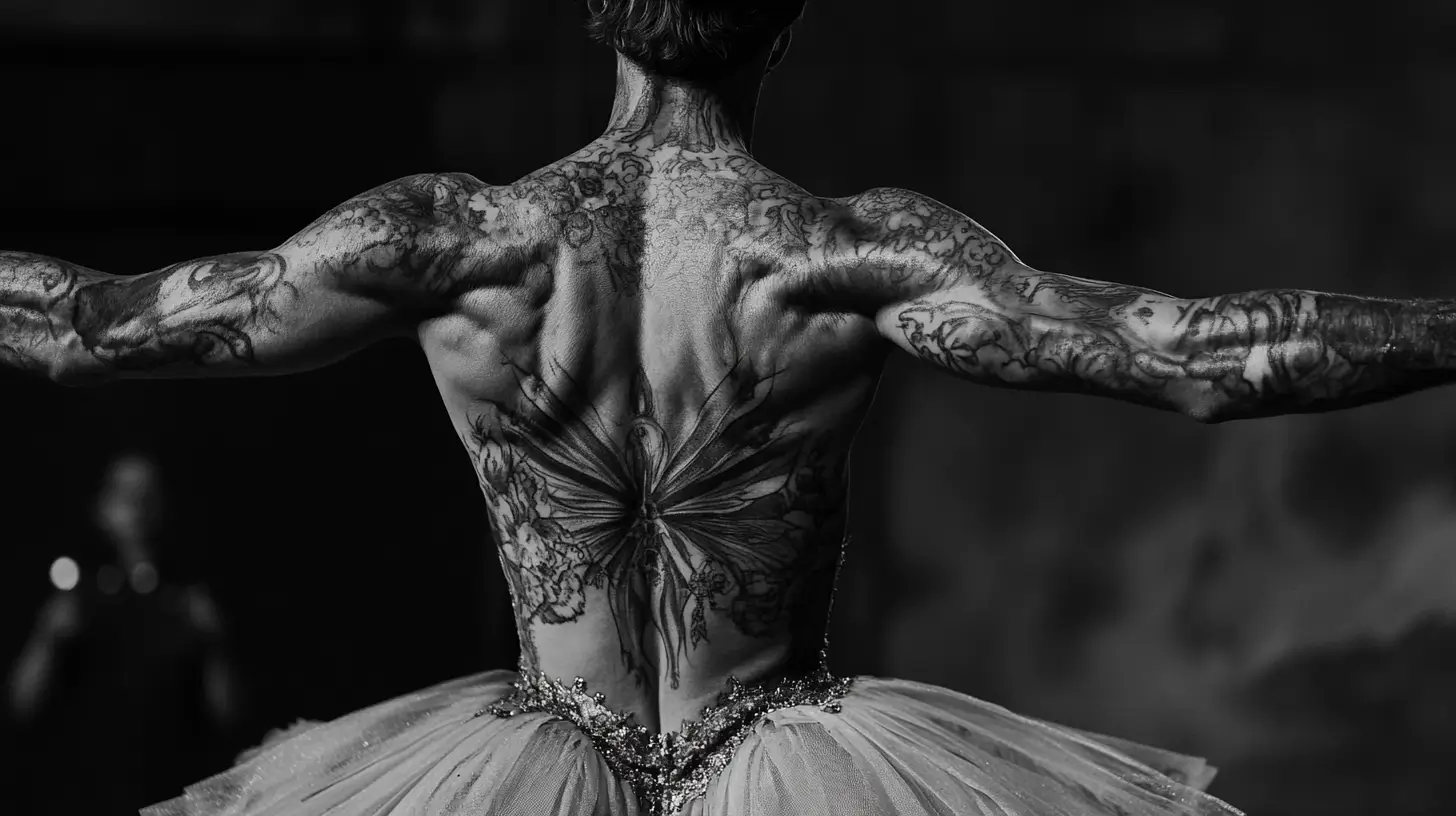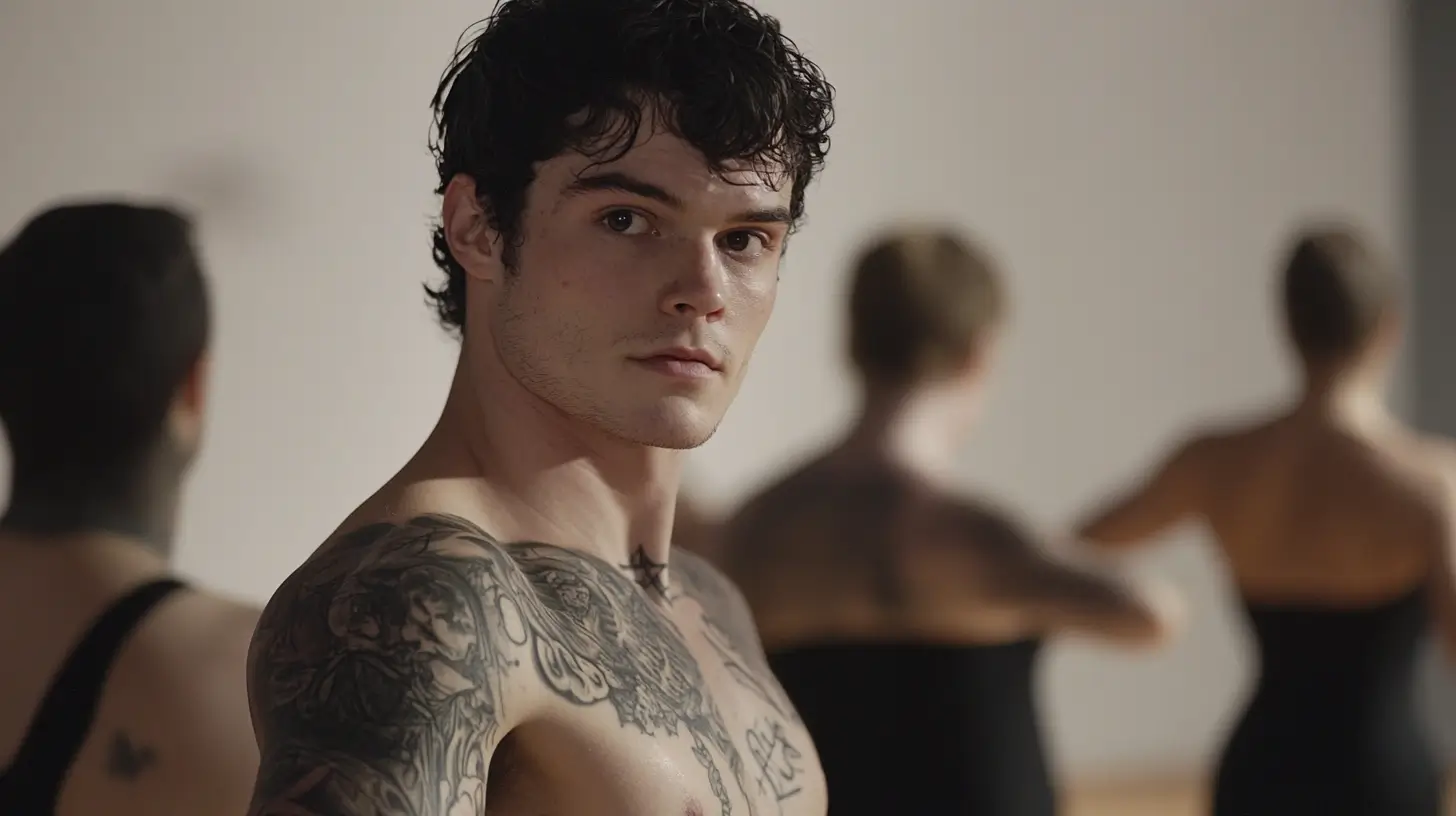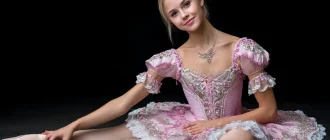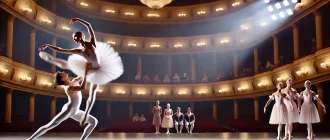Can a ballet company have dancers who have tattoos? Yes, but the acceptance varies. Some ballet companies embrace body art, while others prefer a clean look. This article examines the ballet world’s perspective on tattoos and their impact on performances, auditions, and dancers’ personal choices.
Graceful Insights
- Tattoos in ballet have traditionally been viewed as distractions that undermine the art form’s pure aesthetic, but attitudes are slowly changing as more dancers embrace body art.
- While some ballet companies and choreographers prefer dancers to conceal tattoos, others recognize their potential to enhance character portrayal and personal expression on stage.
- The acceptance of tattoos varies across the ballet community, with different companies having policies influencing how dancers approach body art and its visibility in auditions and performances.
Art de Podcast
Body Art and Ballet
| Category | Details |
|---|---|
| Traditional Expectations | Historically, ballet has emphasized a “clean” and uniform look, often discouraging visible tattoos to maintain aesthetic purity. |
| Professional Implications | Visible tattoos may require covering with makeup, clothing, or sleeves during performances, which can be time-consuming and costly. |
| Personal Expression | Many dancers view tattoos as personal expression, representing life experiences, beliefs, and creativity. |
| Acceptance in Companies | Some contemporary companies and choreographers are more accepting of visible tattoos, while traditional companies may still have stricter policies. |
| Covering Techniques | Professional-grade body makeup, tattoo sleeves, and stage costumes are commonly used to hide tattoos during classical performances. |
| Cultural Influence | The presence of tattoos in ballet reflects broader cultural shifts towards body positivity and acceptance of diverse forms of self-expression. |
| Impact on Casting | Tattoos can impact casting decisions, especially in classical roles that require a traditional look. Modern roles and contemporary works are more flexible. |
| Role of Social Media | Social media platforms have enabled dancers to showcase their tattoos, influencing public perception and contributing to the growth of a more accepting community. |
| Health and Maintenance | Tattoos require proper care, especially for dancers who sweat heavily during practice and performances, as this can impact their longevity and appearance. |
| Notable Tattooed Dancers | Dancers like Sergei Polunin and Misty Copeland have visible tattoos and have spoken about their significance, challenging traditional norms. |
Key Considerations for Ballet Dancers with Tattoos
- Professional Requirements: Dancers should be aware of the specific policies of the companies they audition for, as expectations can vary widely.
- Role Versatility: The ability to easily cover tattoos can enhance a dancer’s versatility, allowing them to fit both traditional and modern roles.
- Health Risks: Regular performance demands can stress the skin, making proper tattoo aftercare essential to prevent complications such as infections or fading.
The Ballet World’s View on Tattoos

Traditional views in the ballet community often regard tattoos with skepticism. Tattoos are usually perceived as incompatible with ballet’s aesthetic standards, which emphasize a dancer’s unblemished and pure appearance. This perspective is rooted in classical ideals of beauty and purity that have been upheld for centuries.
Many ballet enthusiasts believe that tattoos detract from a dancer’s physicality, thereby undermining ballet’s refined image. While some roles may embrace tattoos, the overall perception favors a traditional, unmarked, covered appearance. This sentiment has shaped how dancers present themselves on stage and during auditions for many years.
However, tattoos are becoming more accepted in modern dance environments. Some renowned ballet dancers now perform with flamboyant tattoos, setting new trends. As societal acceptance of tattoos increases, more dancers will likely feel comfortable displaying this body art on stage. This shift reflects a broader trend towards personal expression, challenging traditional norms in many aspects of the ballet world.
The Prevalence of Tattoos in Ballet
Tattoos have become increasingly prevalent in ballet, with many professional dancers proudly sporting ink. According to a recent survey, 70% of ballet dancers have at least one tattoo. These tattoos are small and discreet, striking a balance between personal expression and professional considerations.
This rise in tattoos among ballet dancers can be attributed to society’s growing acceptance of body art and the increasing number of dancers who view tattoos as a form of self-expression. As more dancers adopt this trend, the ballet community gradually shifts its perspective, recognizing that tattoos can coexist with the elegance and discipline of ballet.
Visible Tattoos on Stage

Tattoos can present a pretty unique challenge on the ballet stage. They can be seen as a potential distraction, leading some dancers to conceal them during performances to maintain focus on their artistry. The idea is to ensure that the audience’s attention remains on the dance rather than being diverted by a visible hand tattoo.
Many dancers use makeup designed for tattoo coverage, involving a multi-step process that starts with cleansing the area and applying a skin primer. Depending on the tattoo’s ink pigment, color-correctors can enhance the effectiveness of the cover-up. Setting sprays and powders lock the cover-up, ensuring it remains intact throughout the performance. Costume choices can also be adjusted to minimize the visibility of tattoos on stage.
Choreographers often have specific preferences about tattoo visibility in their productions. They might suggest additional makeup or body doubling to conceal tattoos, which can increase production costs and impact casting decisions. These considerations highlight the tension between maintaining traditional aesthetics in costume and accommodating modern expressions of individuality.
Impact on Auditions and Casting
Today’s Dancers often face societal pressures regarding their appearance, including discussions about tattoos and their appropriateness for various roles. During auditions, the visibility of tattoos can be a significant factor. Ballet dancers often consider the potential need for concealment when deciding whether to get a tattoo, especially in a highly competitive field where every detail can influence casting decisions.
In contemporary ballet, some artists use tattoos to enhance their character portrayal, showcasing visible ink on stage. This can add depth to their performances, making their characters more relatable or intriguing to modern audiences. However, this approach is not without its challenges, as tattoos may still be seen as a distraction or a deviation from the classical aesthetic, which can impact casting decisions.
Ultimately, getting a tattoo involves careful consideration of its potential impact on a dancer’s career. While some roles and productions in the company may embrace visible tattoos, others may require adherence to traditional standards. Balancing personal expression and professional expectations is a significant aspect of life in the ballet world.
Personal Expression vs. Traditional Aesthetics
The debate over the clash between personal expression and traditional ballet aesthetics is ongoing. Younger generations of ballet dancers are increasingly challenging conventional norms, advocating for the right to express individuality through tattoos. They view body art as an extension of their personality and a way to make a unique statement within classical dance, especially as ballet dancers.
However, some believe that visible hand tattoos could disrupt the aesthetic of classical ballet. The ballet community often views tattoos as a distraction from the classical ideals of the art form.
Mixed opinions exist within the community regarding the appropriateness of tattoos on stage, with preferences often leaning towards discretion. This tension reflects the broader cultural shift towards greater acceptance of personal expression, even in traditionally conservative fields like ballet.
The acceptability of tattoos might depend on the ballet’s style; contemporary works may allow tattoos to fit better than classical ones. This opens up new possibilities for dancers to showcase individuality while honoring ballet’s rich traditions. As the art form evolves, balancing personal expression and traditional aesthetics will likely remain a dynamic and contested issue.
Historical Context: Body Modifications in Ballet
Historically, traditionalists in ballet viewed body modifications, particularly tattoos, as distractions compromising the ballerinas’ aesthetic appeal. Figures like Marie Taglioni, a ballerina dancer most often imagined without tattoos, epitomized the classical ideals of beauty and purity in dance, embodying the revered standard of care for a dancer’s body.
These ideals have long influenced how ballerina dancers present themselves and how their bodies are perceived on stage.
However, the perception of body modifications in ballet has shifted significantly over time. Modern dancers are more likely to have visible tattoos compared to their predecessors. This change reflects broader societal trends toward greater acceptance of body art and personal expression, including the use of the dancer’s body.
As the ballet world evolves, the historical context offers a valuable means of understanding current debates and attitudes toward tattoos.
Audience Reactions to Tattooed Dancers

Audience reactions to tattoos on ballet dancers can vary significantly, impacting the perception of the performance. Many ballet audiences dislike visible tattoos on dancers, viewing them as distractions from the performance’s core. For these viewers, tattoos can detract from the elegance and purity traditionally associated with ballet.
Some audience members and cast members express indifference toward tattoos, claiming they do not care or notice them during performances. This suggests that the impact of tattoos on audience perception may depend on individual preferences and expectations. Understanding these reactions is crucial for dancers and choreographers when considering the implications of body art in ballet.
Notably, there have been recent instances where tattooed dancers have received positive feedback from audiences, indicating a shift toward greater acceptance. These anecdotes highlight evolving audience expectations and the potential for tattoos to be integrated into the ballet experience.
Tattoos as Part of Character Portrayal
Some contemporary dancers argue that tattoos can enhance character portrayals in certain performances. For example, a visible tattoo might add depth to a character’s backstory, past, or personality, making them more relatable to modern audiences. This approach offers a nuanced perspective on body art in ballet, acknowledging its capacity to enhance the storytelling aspect of dance.
In some cases, tattoos can serve as a form of costuming if they align with the character or narrative of a ballet’s cast. Temporary tattoos are sometimes used for specific roles or performances, allowing dancers to experiment with body art without a permanent commitment. This flexibility can be particularly useful in contemporary productions, where the boundaries of traditional aesthetics are more fluid.
Opinions on the acceptability of tattoos in ballet vary widely. Some viewers believe tattoos can be acceptable if they are discreet and align with the character being portrayed. This perspective opens up new possibilities for integrating body art into ballet, challenging traditional norms while enhancing the art form’s expressive potential.
Covering Tattoos for Performances
Ballet dancers commonly cover their tattoos for performances. Makeup designed for tattoo coverage, such as Dermablend Leg and Body Makeup, helps conceal body art, ensuring smooth blending with the surrounding skin. This technique maintains the classical aesthetic and ensures visual harmony during performances.
Choreographers may suggest covering tattoos with makeup if the exposed tattoos detract from the performance’s overall visual presentation. Additionally, costume design plays a crucial role in hiding tattoos, with specially crafted garments that can obscure visible ink. These efforts highlight the importance of preserving ballet’s traditional aesthetics even as the art form evolves.
In some cases, dancers may use methods like fish skin to cover their tattoos for performances. This practice highlights the extent to which dancers and choreographers go to ensure that body art covered up does not compromise the visual integrity of a ballet production.
Choreographers’ Opinions on Tattoos

Choreographers often have strong opinions on the presence of tattoos in ballet. Many people perceive tattoos as potential distractions during performances, especially if they are visible on stage. This concern stems from a desire to focus on the dancer’s movements and the overall artistic presentation.
While some choreographers see tattoos as a form of self-expression, they often emphasize maintaining traditional aesthetics in ballet. Acceptance of tattoos can depend on the company, specific production, and whether the tattoos enhance the character portrayed. This nuanced approach reflects the tension between upholding classical ideals and embracing modern expressions of individuality.
Casting directors may favor dancers without visible tattoos to avoid complications related to copyright permissions from tattoo artists. This practical consideration adds another layer to the decision-making process for dancers contemplating body art, highlighting the interplay between personal expression and professional requirements.
Tattoos in Different Ballet Companies
The perception of tattoos in ballet varies widely among different companies and schools. Some ballet companies are more open to body art, reflecting a broader acceptance of personal expression. However, tattoos can restrict casting opportunities, as certain roles may require uninked skin. This can influence a dancer’s decision to get a tattoo and its visibility.
The visibility and size of one arm or one side of a tattoo can greatly influence whether a dancer is considered for a particular audition. Opinions vary, with some choreographers preferring no visible tattoos, while others may accept them if they align with the character’s portrayal.
Ballet contracts often include clauses regarding a dancer’s appearance, which may restrict visible tattoos and piercings. These policies reflect diverse approaches to tattoos within the ballet world.
The Art of Tattooing in Ballet
Tattooing in ballet is a unique and intricate process that requires a deep understanding of both tattooing and dance. Many tattoo artists specialize in creating custom designs specifically for ballet dancers, taking into account the dancer’s body type, movement, and personal style. These artists work closely with dancers to ensure the tattoos look visually appealing, complement the dancer’s movements, and enhance their overall performance.
The art of tattooing in ballet is about more than just creating a beautiful design; it’s about capturing the essence of the dancer’s personality and artistry, making each tattoo a unique reflection of the dancer’s journey and identity.
Real-Life Examples of Ballet Dancers with Tattoos
There are many inspiring examples of professional ballet dancers who have embraced tattoos. San Francisco Ballet principal Taras Domitro sports a tattoo on his forearm that says, “Everything is beautiful, and nothing hurts,” translated from Elvish, the language created by J.R.R. Tolkien.
This tattoo reflects his philosophy and adds a unique touch to his performances. Another notable example is American Ballet Theatre principal Misty Copeland, who has a snake tattoo coiled around her right ankle. These dancers, along with many others, are helping to break down the stigma surrounding tattoos in the ballet world, showing that body art and classical dance coexist harmoniously.
The Future of Tattoos in Ballet
As tattoos become more accepted in ballet, we’ll likely see more dancers embracing body art. Many ballet companies are already starting to relax their policies on tattoos, allowing dancers to showcase their ink on stage. This shift is partly driven by the rise of social media, where dancers use their platforms to display their tattoos and challenge traditional beauty standards.
As the art form evolves, tattoos will likely become an integral part of ballet, allowing dancers to express themselves creatively. This evolution reflects a broader trend toward valuing individuality and self-expression, even in traditionally conservative fields like ballet.
Famous Ballet Dancers with Tattoos
| # | Dancer | Company/status (2025) | Key tattoo(s) & placement | Story/meaning | How do they deal with it onstage |
|---|---|---|---|---|---|
| 1 | Sergei Polunin | Independent guest star (ex‑Royal Ballet) | Full chest portrait of Vladimir Putin; “I am not a Human” script on waist; grim‑reaper & wolf motifs; dove‑heart on cheek | Self‑declared manifesto of love & power—Polunin says each symbol marks a “rebuild” of his life; the Putin ink ignited worldwide controversy. The Guardian: Latest news & breaking headlines | Often left visible, some theatres now contractually require a cover‑up or refuse to hire him |
| 2 | James B. Whiteside | Principal, American Ballet Theatre | Rib‑cage claw‑mark (inspired by ABT x Koio sneaker logo) | “Wear your scars proudly.” Whiteside links the claw to surviving setbacks and queering ballet’s masculinity, Mic | Uses body‑makeup when dancing princes; embraces the ink in contemporary works |
| 3 | Alec Knight | Soloist, New York City Ballet | 26 tattoos, chiefly arm sleeves; first was a memorial for his grandfather at 18 | Says ink reminds him he’s “a human, not just an instrument,” Pointe Magazine | Long‑sleeve warm‑ups in rehearsal; concealer film for classical ballets |
| 4 | Madeline Woo | Principal, Royal Swedish Ballet | Poppy on shoulder (Californian roots); expanding black‑line sleeve across arm/chest/stomach | First hid the sleeve out of fear; now showcases it as body‑“decoration” that makes her feel powerful, Pointe Magazine | Covers for classics; left exposed in Alexander Ekman’s Midsummer Night’s Dream premiere |
| 5 | Schuyler Wijsen | Artist, Boston Ballet | Triangle inside wrist; growing collection incl. poodle on left forearm (childhood nickname) | Treats tattoos as a “scrap‑book” of life phases; credits senior colleagues’ ink for emboldening him, Pointe Magazine | Standard Kett Cosmetics routine; some directors allow full visibility |
| 6 | Michaela DePrince († 2024) | Former Boston Ballet second soloist / Dutch National Ballet coryphée | Multiple small pieces (e.g., script on ribs) are shown in the 2022 Nike “Own the Floor” campaign | Celebrated tattoos, nose‑piercing, and braids as part of changing ballet’s beauty code, LinkedIn | Proudly displayed in photoshoots, blended with stage makeup for classical roles |
| 7 | Body‑art trend (2025) | — | Pointe Magazine survey: Knight, Woo, Wijsen as “case studies” | Article notes tattoos are no longer taboo, but still require negotiation with artistic staff, Pointe Magazine. | Varies by company and repertoire |
Resume
In summary, the topic of tattoos in ballet is a complex and multifaceted one. Traditional views often see tattoos as incompatible with ballet’s refined aesthetics and style, but there is a growing acceptance, particularly in contemporary dance environments. Dancers must navigate societal pressures, practical considerations for auditions and performances, and the balance between personal expression and traditional aesthetics.
As the ballet world evolves, tattoos will likely become less noticeable and more accepted. This shift reflects broader societal trends toward valuing individuality and self-expression. Ultimately, the future of tattoos in ballet will depend on the ongoing dialogue between tradition and modernity, as well as the ballet community’s willingness to embrace change.
FAQ
Can having tattoos limit a dancer’s casting opportunities?
While many companies no longer have formal tattoo bans, highly visible ink can sometimes influence casting decisions in classical productions, as it may be seen as a distraction from a uniform aesthetic.
Do ballet schools accept students with visible tattoos?
Most pre-professional schools discourage visible tattoos during training, as they may distract from the uniformity of the lines. However, smaller or contemporary-focused studios may be more flexible.
How do dancers reliably cover tattoos for performances?
Professional makeup artists use waterproof, oil-resistant products—such as Skin Illustrator or alcohol-based concealers—sometimes combined with flesh-toned sleeves, to ensure tattoos stay hidden under lights and sweat.
What is the time commitment for covering tattoos before a show?
Covering ink can take anywhere from 15 minutes for small tattoos to 40+ minutes for larger pieces. It may also involve multiple products and application layers.
Are there health concerns around using tattoo cover products?
Longwear makeup—especially waterproof or alcohol-based—can dry or irritate skin. Dancers need to cleanse thoroughly after performances to prevent issues such as clogged pores or dermatitis.
Do dancers face career consequences if they refuse to cover tattoos?
If a dancer refuses to comply with tattoo guidelines set by a company for a production, they may face replacement or reduced opportunities, especially in traditional repertory.
Are tattoos more accepted in contemporary ballet?
Yes. Contemporary and modern companies often encourage dancers’ individuality, letting tattoos remain exposed when it suits the aesthetic of a work.
Have top ballet companies relaxed their stance on tattoos?
Major companies like New York City Ballet and San Francisco Ballet typically have no official bans on tattoos, as long as they can be covered for classical performances.
Can tattoos positively influence a dancer’s artistic expression?
Many dancers say tattoos are personal symbols—reminders of identity, inspiration, or heritage—which can deepen artistic presence both onstage and off.
How should aspiring dancers approach getting a tattoo?
Dancers should carefully consider ink placement, choosing areas that can be concealed under rehearsal or performance attire. Consulting their mentor or artistic director helps avoid future conflicts.
Do directors or choreographers ever allow visible tattoos?
Yes. Some choreographers welcome visible tattoos for contemporary pieces, using them as extensions of the dancer’s identity and as part of the visual storytelling.
Is tattoo coverage harder for muscular or high-sweat performances?
Yes. Sweat, friction, and body heat from lifts or athletic movements make tattoo coverage more susceptible to smudging, requiring techniques such as fabric sleeves or extra makeup.
What techniques exist beyond makeup to hide tattoos?
Besides makeup, dancers use flesh-toned compression sleeves or arm covers. For larger pieces, some mix fabric sleeves with adhesive makeup to ensure full coverage.
Do male ballet dancers face the same tattoo restrictions?
Yes. Male dancers also must cover tattoos in classical roles (e.g., princes), and many use the same concealment techniques to maintain the artistic integrity of a production.
Could tattoos affect a dancer’s job interview or audition?
Visible tattoos in an audition could be seen as a distraction in classical settings. Candidates should inquire in advance about policies and be ready to cover visible ink.
Do dancers regret getting tattoos once their careers progress?
Some do, especially if they underestimated the coverage demands. Others find that their tattoos enrich their self‑identity. It’s highly personal and career-context dependent.
How do dancers maintain tattooed skin during heavy rehearsal periods?
Regular moisturizing and avoiding excessive sun exposure help prevent skin cracking or color fading. Hydrated skin also holds cover makeup better during shows.
Are tattoo-friendly companies actively recruiting inked dancers?
Some contemporary dance collectives actively recruit performers with body art to embrace diversity. However, traditional companies still prioritize uniform lines over individual expression.








